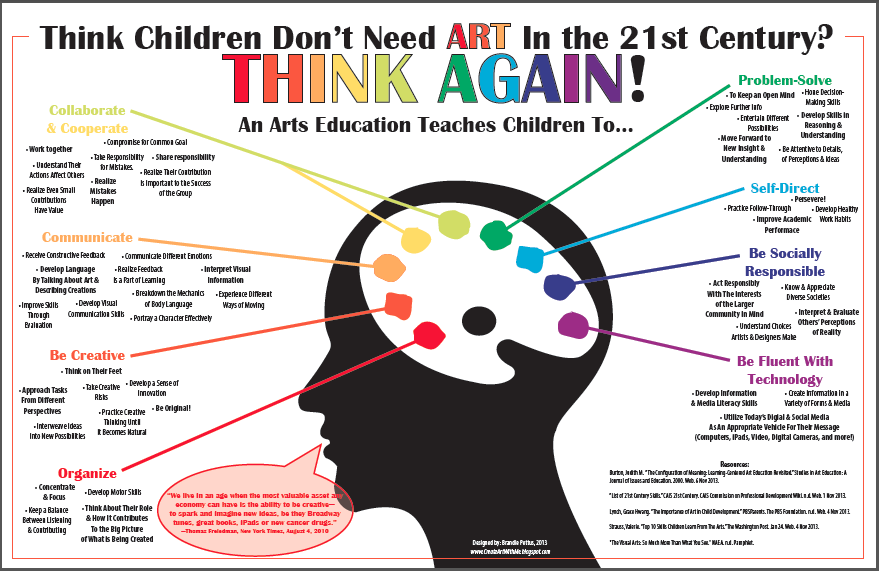Fine Arts in our Education: Bring it On!
October 1, 2019
Students are constantly looking for new creative outlets to be themselves, whether it’s through clubs or taking classes outside of school. But wouldn’t it be easier to just appease all of those creative needs in school? That’s what most public schools believe. But what about charter schools? Well, you’d be lucky to get a small art class out of it, because most public charter schools don’t teach fine arts.
“Education in the arts is an integral part of the development of each human being,” says an article from the Katy Independent School District titled “The Importance of Fine Arts in Education.” “Those who have studied learning processes throughout the ages, beginning with Plato, have emphasized the importance of the arts in the education process.”
Fine arts in education, like dance, music, or art, is pretty important to help students find their passions and become more well rounded. You can’t focus on academics your entire life, you need hobbies or ways to express yourself without using math or science. But students aren’t given many opportunities for arts in charter schools because they don’t have proper classes to help them improve their talents.
Take our school, for example, Imagine Prep Surprise. We have a small amount of fine arts classes, like photography, digital art, and the required art class all middle schoolers must take. But what about dance? Or music? Or theatre? Those are all clubs, except dance, that only meet about twice a week, and they aren’t proper classes. A proper class will give you one on one explanations with the teacher to help you understand the topic better, and you are graded based off of your performance so you learn how to improve your talent.
Fine arts both help bring the school together, and provide a wider variety of creative outlets for students. It helps them be themselves and find people with similar interests so they can make new friends and bond over their classes. This way students won’t feel so alone or like outcasts, they have a group that feels and thinks like they do, which is refreshing for school students going through a lot of changes.
“The arts reach students not normally reached, in methods not normally used,” explains the article. “They engage many areas of the brain and also have far-reaching effects on the learner’s mind.”
Fine arts also helps students and their experience in school. “Higher student attendance and lower dropout rates, fewer fights, greater understanding of diversity, and greater peer support, the arts provide challenges to students of all levels—from beginner to expert, students learn to become engaged and self-educating. Instead of just regurgitating facts, they actively seek new information… ” Allison Wingall explains on ‘Fine Arts and Teaching: How It Benefits Students’ on College Raptor Blog.
According to Wingall, “The fact of the matter—and yes, we can indeed say fact as the many benefits of arts education has been thoroughly researched—is that the arts can teach life skills, inspire students, and allow them to experience the world in a different way.”
Students who take Fine Arts classes evidently do better in school, and they teach kids different skills most schools never think to teach. They look forward to going to school, not dreading it every morning when they wake up because they have the opportunity to be themselves.
Although, sometimes it is difficult for charter schools to apply fine arts courses. They cost a lot of funding, and since they don’t get a lot of government funding, they tend not to add them to their schools. That’s why they are advertised as clubs so the students can still be creative and have an outlet for their passions, but not have to pay for proper classes.
Fine Arts helps bring people together, and learn more about themselves, which is why I believe we, Imagine Prep students, should be provided with more of these classes so we can learn more than what’s taught in textbooks and broaden our creative range as a school and community.
